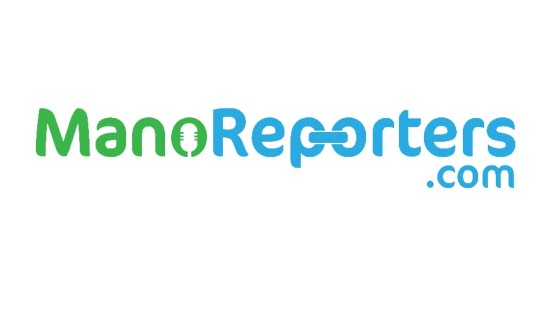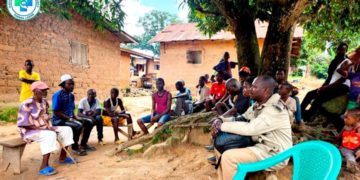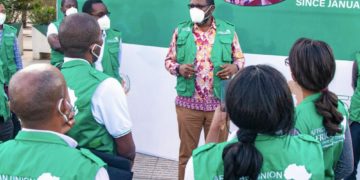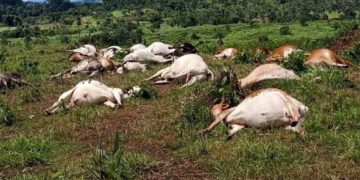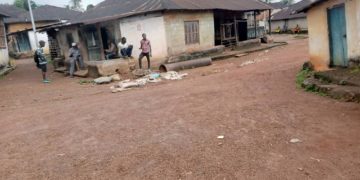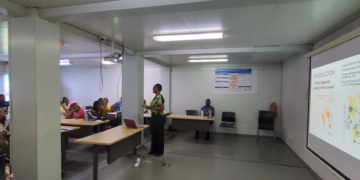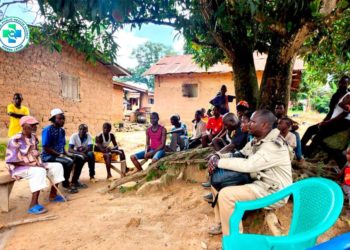By Kemo Cham in Makeni
A new state-of-the-art laboratory in the northern city of Makeni is poised to transform surveillance and diagnostic testing in Sierra Leone.
The clinical research laboratory located within the Regional Government Hospital is a much needed upgrade of the country’s capacity in the prevention, detection and response to public health emergencies.
Established by the Child Health and Mortality Prevention Surveillance (CHAMPS), the international standard laboratory is equipped with biomedical and technological tools, as well as equipment like biosafety cabins, robots designed for molecular and microbiological testing, work stations, freezers and refrigerators.
Categorized as a Level 2 biosafety facility, it’s the first of its kind in the entire northern region, will serve as the new work station for CHAMS, a US government funded project that determines and tracks the causes of death among children under-five.
CHAMS specifically seeks to identify definitive causes of stillbirths and child deaths through community engagement, mortality surveillance, advance laboratory testing and diagnostics, and rapid, open access to data.
The initiative, implemented in collaboration with the Health ministry, is part of the government’s battle against infant mortality, one of the highest in Africa.
According to data from the Ministry of Health, 104 infants die per every 1000 live births in Sierra Leone. While this figure represents a significant improvement over the years, it’s still high and objectionable, says Dr Austin Demby, Minister of Health and Sanitation (MoHS).
“Every life that we lose here is very, very important,” he says at the inauguration ceremony on Thursday, 21st July.
The goal of the Health ministry, according to Dr Demby, is to ensure that no baby dies from preventable death. But if any death occurs, he adds, there must be an explanation for the cause, so as to be able to prevent future deaths,
“This is the importance of having a science driven institution [like this],” the Minister stresses in his keynote address at the event.
CHAMS was introduced in Sierra Leone in the aftermath of the 2014-2016 West African Ebola epidemic, as part of efforts to strengthen the country’s healthcare system.
Sierra Leone was one of three countries – alongside neighboring Guinea and Liberia – worst hit by that epidemic which claimed over 11, 000 lives and sickened nearly 30, 000 people.
Ebola exposed the weakness of Sierra Leone’s healthcare system in general, especially its diagnostics capacities. What little expertise that was available pre-Ebola was concentrated in Freetown.
The Makeni regional hospital serves as an important regional reference laboratory. Its inability to provide crucial diagnostic services made it hard to provide proper surveillance of public health threats in the region.
In an effort to rectify this, the government sought a collaboration with the United States government to establish CHAMS. The initiative is funded by the Bill and Melinda Gates Foundation and implemented by Emory University in Atlanta, Georgia.
On the ground, the project is managed by the international development outfit, Crown Agents, under the supervision of the MoHS.
The Bombali site started operation in 2017. And in 2021, a second site was opened in Bo in the south of the country.
Working with field reporters, samples are collected and information sourced from families and health facilities are analyzed to determine causes of deaths. It also conduct post-mortem sample, through needle-based autopsies, and report the cause of death within 24 hours.
These data are used to inform policy formulation to ensure appropriate responses to local health care needs.
Dr Ikechukwu Ogbuanu, Site Director for CHAMS Sierra Leone, says across these two districts the project has collected samples from over 700 child deaths, 500 of which were from Bombali.
“CHAMS transforms data into action, working with partners to use our findings to inform evidence-based solutions to prevent further deaths,” says Dr Ogbuanu.
CHAMS is a global network, operating in six other countries outside Sierra Leone, including Mali, Kenya, Ethiopia, and Mozambique. It also has sites in South Africa and Bangladesh.
Dr Ogbuanu says globally nearly six million under-five children die annually from causes that often remain a mystery, due to gaps in disease surveillance, death registries and postmortem diagnostics.
“This is especially true in low-income countries, where mortality rates are also the highest. CHAMS works to close these gaps by gathering scientific evidence needed to save young lives,” he tells the audience during the inauguration ceremony.
CHAMS is supported by local partners FOCUS 1000 and World Hope International, which provide support in specific aspects of the project.
Plans are afoot to expand the project’s operation, to include interventions around improved access to quality and affordable antenatal care. Officials say the plan involves establishing pregnancy surveillance, with the goal of improving management of labour and delivery, as well as child malnutrition.
Sierra Leone has one of the highest rates of maternal mortality in the world, with latest data from the 2019 Demographic and Health Survey putting it at ………………
“We are not going to separate the mothers and babies. We will fight for the babies. We will equally fight for the mothers,” says Dr Demby, while announcing a plan to set target to cut down on the number of women dying due to pregnancy complications.
Clinical microbiologist Dr Julius Ojulong was hired by Crown Agents to manage the new laboratory. He says the facility comes in handy in respect of the planned expansion.
Dr Ojulong says the newly installed equipment will enable his team to conduct tests CHAMS couldn’t do locally previously, like culture and sensitivity tests, through which they can isolate organisms that could cause infection in blood and cerebral spinal fluid.
“Essentially what we have been doing in this lab are histochemistry and haematology tests. What we are adding now is bacterial culture and sensitivity testing. We are also able to do molecular testing of most of the diseases which the country would spend a lot of money sending them out for testing,” he explains.
Officials say this new laboratory has positioned Sierra Leone well to respond to emergency infectious disease outbreaks for conditions like Covid-19, as well as Lassa Fever, which is endemic in the country and Rift Valley Fever.
“These [Lassa Fever and Rift Valley] are two conditions that behave like Ebola,” says Dr Ojulong, noting that they can also identify the so-called notifiable diseases, like TB, going to as far as determining if they are “resistant or sensitive.”
The laboratory facility also offers opportunity for capacity building for local expertise. And this, says United States Ambassador Mr David Reimer, makes the US government proud to be involved in the project.
“The project is a major contribution to capacity building in surveillance, laboratory and research in the country,” he says at the event.
The US government provided funding for the initial period of establishing the facility, and the US Centers for Disease Prevention and Control has provided leadership and technical expertise to the project.
“This laboratory is an important part of US-Sierra Leonean collaboration, together with the great work already being done to end the HIV/AIDS epidemic, treat and prevent Malaria, and stop the global Covid-19 pandemic,” Ambassador Reimer was quoted in a statement.
